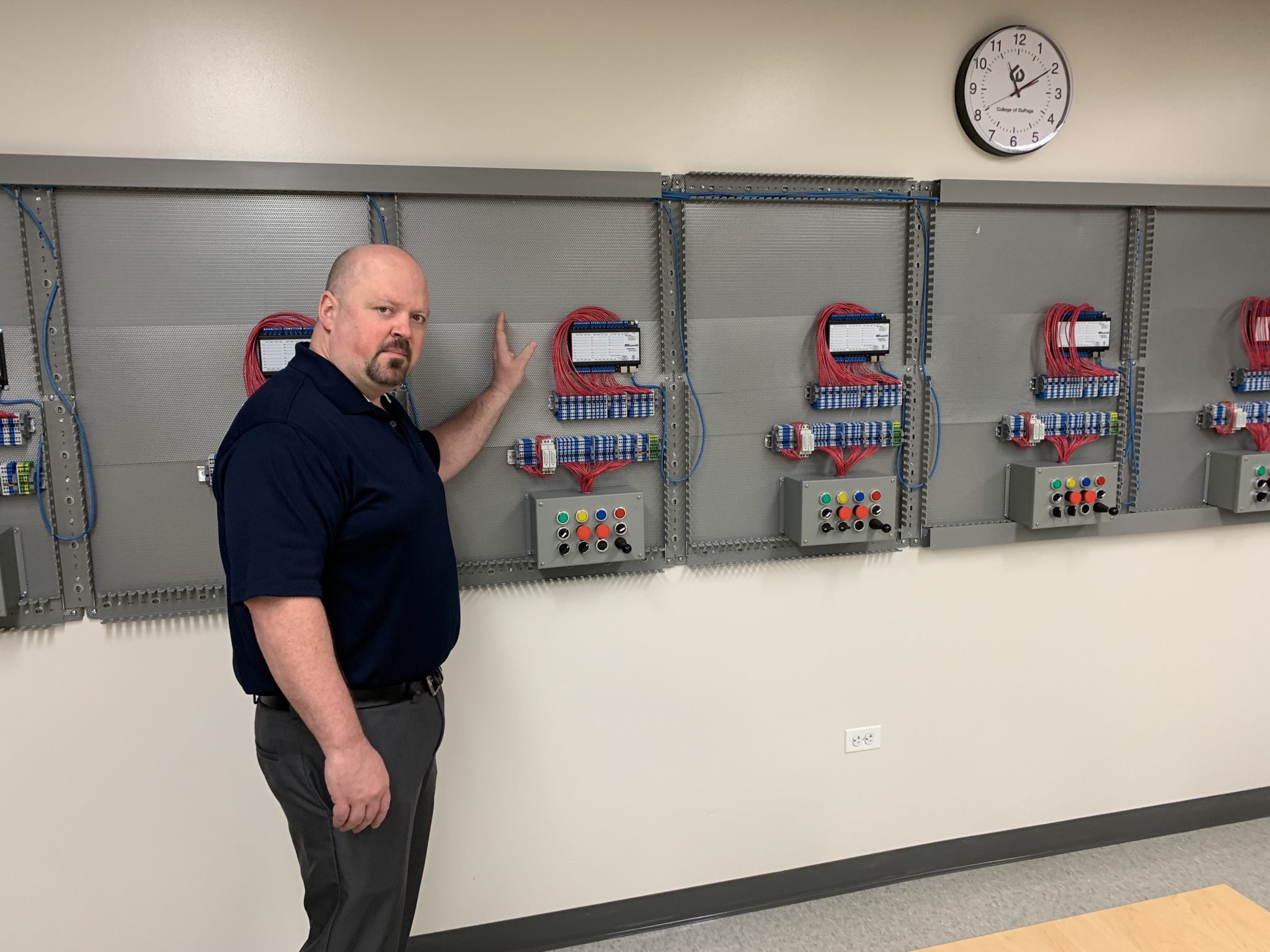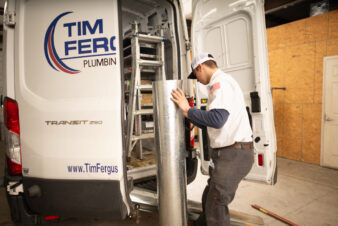Bob Clark, College of DuPage (COD) Heating, Ventilation, Air Conditioning, and Refrigeration (HVACR) program chair, has spent the last six years transforming the community college’s HVACR program and its interactive learning lab, built from within.
GLEN ELLYN, IL—When you sit down with Bob Clark and talk about training and education, he will not hold back about any aspect of his program, and his direction on post-secondary education. Clark started at the school with a nearly “empty” space and a vision. “In order to create an unmatched lab, you have to orchestrate a vision that people can believe in for your program. When you establish that vision with your industry partners and your instructors, now you have a vision that is ‘bigger than yourself.’” So Clark, his instructors and his students built an interactive classroom and lab environment that is changing HVACR education.

The first time I visited with Bob Clark in 2017, he gave me a birds-eye view of the HVACR lab.
The HVACR lab was built from within—all of the teachers oversaw the lab being built by the students. “We built our own lab and we built our own central plant. The central plant project is going to be one of the most defining features of our lab. It is sized and designed so that we have exhibit a well-designed system, but we also have the ability to duress on every part of the system. We wanted a system that could demonstrate what happens in a building on a good day, a bad day and under extreme conditions. We have the capability to demonstrate primary/secondary, primary/variable or constant flow systems, which can flow in both direct and reverse return. Our lab concepts can experience multiple scenarios for critical systems that can not normally be studied. It’s not like any other system,” says Clark.

On the floor in the lab, Clark shows that while in the lab, one can experience multiple scenarios for critical systems that can not normally be studied.
This isn’t about me, says Clark, it’s about, “how we help this community and our industries succeed at growing their organizations with the right people?” It’s by building the greatest technicians that the program can yield. For example, “Our hydronic classes go through design, friction loss, and they also have to understand engineering concepts. There are very few programs teaching hydronics. You have to teach from a systems thinking mindset and get students to think within very complex systems. We have hands-on classes, not PowerPoints and some donuts for our classes.”
“Your mind is the only thing that separates you from every other technician out there—the most important tool you have is your brain. This field is about your mind.”
When you look at HVAC programs nationally, Clark bets the average age in post-secondary education—community colleges for HVAC programs—is 30 years old. “Most technical eduction funding is channeling into automotive, manufacturing and welding programs across the United States. Most high school counselors, career advisors and parents do not know how challenging, how complex, and how much the HVACR industry pays. The skilled workforce in America is losing its ranks and I do not believe that education understands or cares about its decline. It is sad that they will start to get it only when their homes are cold in the winter and their refrigerators stop working. It is a sad day in education when we care more about guiding children toward psychology, than towards meaningful, good paying, plentiful, and rewarding careers in the skilled workforce. This reminds me of how Rome fell: skilled workforce ceased to be a priority.”

The “hands-on” lab is important for later work in the field (such as working with these wall-hung boilers.)
According to Clark, the industry is lacking accountability in education systems. “How are skilled workforce programs being supported across the country? The people that want to pursue skilled trades do not even know about the programs that exist because counselors and advisors are not instructed to communicate all of the opportunities available in the public school systems. Students that attend community colleges are trying to change their lives while working a full-time job.
“Do you want to be bucket boy or do you want to pay attention in here and get yourself a career because your mind is the only thing that separates you from every other technician out there—the most important tool you have is your brain. This field is about your mind,” says Clark.
Clark says he’s tried multiple ways to see how you can use theory to communicate into the technical and “it’s impossible until they get down in the lab and experience failure and success.”

In the lab, students will learn to hold the wrench the right way, back up the pipe wrench correctly, how to screw stuff together, experience special aptitude and understand system dynamics, among other things.
The program is teaching them mastery because HVACR is filled with a multitude of skills and the lab has been built to simulate multiple areas. “I do this because HVACR is a field that you can study the rest of your life and still never get it. Students need to learn to hold the wrench the right way, back up the pipe wrench correctly, how to screw stuff together, experience special aptitude, understand system dynamics, and if they don’t experience it, they won’t get it. It always makes me smile when I see a light come in a student because I know that their education is finally beginning,” says Clark.

While the learning lab is the “jewel” of the program, classroom learning is just as important, taking technical theory and applying in into the lab downstairs.
The difference between here and anywhere else, says Clark, is that the program has four to five classes in the lab running Monday through Thursday night. Their classes have a capacity of 16 students, “It’s packed. I won’t go above 15-16 because anyone that teaches an HVACR class with 25 people and thinks they are going to run a respectable lab with integrity is basically a moron. This is a highly technical field with a lot of equipment that can kill you. People that think that they can PowerPoint HVACR into a student’s mind are lazy and delusional. Running an effective lab is ten times harder than delivering the presentation of your life.”

When Clark arrived at the school nearly six years ago, the space that the lab currently occupies was for the most part empty. The students built the lab and all of the piping was installed during the transformation phase.
Clark also says that holding accountability over his adjuncts is critical. “That’s why we have the best instructors. Our instructors know the importance of the lab environment,” says Clark. “The second you don’t understand that, you are violating the integrity of the whole program.”
You can hear the passion in his voice. He is proud of his work and his ability to mold people into working HVAC technicians. And the lab is his oyster. “At the end of the day, our students build our labs. And nobody will ever take that shit away from us. That was the concept: How do you make a statement to the industry? This is it,” says Clark.



